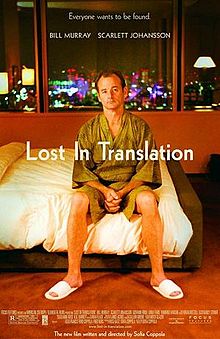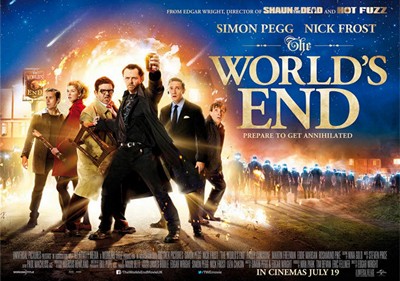
Here’s part one in what I hope could be a multi-part zombie film review. Let me know if you have any zombie films that you dig because I would love to check them out.
Night of the Living Dead (1968)
Image Ten, 96 min., Dir. George A. Romero, black and white
The defining zombie film that sparked a myriad of imitators never once uses “the zed word” during the film. I’m not a film scholar, so it’s hard to say whether NotLD is supposed to be set in the 50’s, or is just a low budget flick with old school sentimentalities.
Every female is a hysterical wreck who can’t help anyone with anything and needs a good slap, and every male is stereotype (strong man, posturer, greedy self-lover). The screenplay is, frankly, quite awful. The characters aren’t fleshed out very much and important details are tossed in as time permits.
The cinematography is quite a different story, however. The film begins during the early evening, and stretches through the night until the following morning. Since the film is shot in black and white, lighting is a huge consideration. Details such as the lighting of the face, dark makeup, and patterns of light and darkness all add to the viewing experience. The soundtrack, which Tobey Hooper obviously took stock of for The Texas Chainsaw Massacre (1974), uses otherworldly distortion and long-lasting crescendos to raise the stakes on otherwise stiff zombies and slow, low-budget action.
If you enjoy zombie films or are just starting to get into the genre, this is the gateway for you. Most every detail, and often times, characters, can be found in every zombie film you have seen. Romero’s films alone are their own cannon, but this film was the progenitor of zombie films to follow.
8/10
The Omega Man (1971)
Warner Bros., 98 min., Dir. Boris Sagal
Boris Sagal was a television director for an unbelievable amount of series, so it’s not too surprising that this movie plays like an extended television show. It could have been a pilot for a longer series.
The film is the second in three film adaptations of Richard Matheson’s novel I am Legend. The novel itself depicts the force that represents ‘otherness’ as vampires, but this film is clearly a zombie picture. The forces against the protagonist can’t venture into daylight, but that doesn’t differentiate them from zombies since they also avoid daylight. You never see anyone eating flesh, but they aren’t sucking blood either. In fact, the question of how these particular undead corpses survive is largely left unanswered. Their stiff appearance and style of attack seem very zombie-like in my opinion.
Charlton Heston plays Robert Neville, a scientist that survives a plague, a plague that seemingly wipes out all of mankind, by injecting himself with the last dose of vaccine after a helicopter crash prevents him from delivering it to the rest of the U.S., er, world, that is…he was definitely going to share it with the whole world…after the U.S. was safe, of course.
His arch nemesis after the plague apocalypse, Matthias (Anthony Zerbe), is the leader of the undead horde who wants to kill Neville. Neville is (in his mansion with a car, electricity, and decently aged scotch) an affront to Matthias’ stone age mentality cult of plague infected weirdos who won’t even pick up a gun to attack him, and want to return to a simpler life where there’s no chance of wiping out humanity with biological warfare. What a bunch of losers. Although, maybe I could read their pamphlet, just to see what a bunch of losers they are. I mean, I won’t want to join or anything, but you can’t dispute what they say, you know what I mean?? It’s not so crazy, I mean, their ideas. And what with those damn terrorists, you never know, I mean, they could totally do that, and shit. Aww man, I should really start looking into bomb shelters. But, I guess I’ll finish this review first.
Neville finds some other folks who aren’t yet zombie like followers of Matthias, so his life is given purpose other than hunting down the jerks who try to kill him every night. In fact, the first 30 minutes or so play like a Charlton Heston NRA commercial: “How would I kill these damn zombies without my beloved Uzi? You’ll have to pry it from my cold, dead hands!”
This film is about as seventies as it gets. Wah-wah bass lines pervade, Heston watches Michael Wadleigh’s Woodstock (1970) at the beginning of the film, and the clothes have magnificently large lapels. Oh, and everyone is drinking some kind of brown liquor out of a tumbler at some point, poured from a cut crystal decanter, but of course. Rosalind Cash’s (Lisa’s) fro is something else, and Paul Koslo (Dutch) looks like he just walked off Woodstock and into the wrong film set, maaahn. Still, watch for the awsomeness that is the finale, and for 70’s style nostalgia. I’ll totally have to do a 70’s horror film roundup at some point.
6/10
Shaun of the Dead (2004)
Universal Pictures, 99 min., Dir. Edgar Wright
Probably the quintessential zombie movie of this decade, Shaun of the Dead draws heavily on Night of the Living Dead in a loving way, erasing the foolishness and flaws of the original and replacing them with tongue-in-cheek references which are hilarious. Barbara (Penelope Wilton) is as dazed as her namesake in NotLD (Judith O’Day), and many of the character types mirror the originals. Despite the allusion to Dawn of the Dead (1985), Shaun of the Dead only lightly references that film.
I won’t go too much into detail, since the film is so enjoyable that it really should be watched and not picked apart. There is a theme of repetition, with strong undertones that we all live like zombies and it takes a massive change of pace to help us excel to our full potential, even if that event is the end of the world. In some ways, it is a coming of age piece (buildungsroman), where the protagonist must shed his juvenile exterior and mature into a robust man who is capable of determining his own destiny. The humor is best appreciated by a gen X audience (perhaps British as well), so there are numerous cultural references that exceed my understanding; however, the humor is so endearing that you will have no problem joining in on the fun.
While a parody of zombie/horror films could easily become tiresome (see every Scary Movie for instance), this film is a tutorial in how to parody a genre by including fans and not obtusely excluding the people who would most enjoy a poke at a genre of film that is overdone or short on levity. You need only go as far as the trailer for Vampires Suck to see how parody can epically fail.
9/10
 As I said above, I’d like to keep watching some zombie films and writing about them, so if you have any suggestions, send them my way.
As I said above, I’d like to keep watching some zombie films and writing about them, so if you have any suggestions, send them my way.
 Dir. Sofia Coppola, 101 min., Netflix Instant
Dir. Sofia Coppola, 101 min., Netflix Instant
 Dir. Drew Goddard, 95 min., In theaters
Dir. Drew Goddard, 95 min., In theaters

